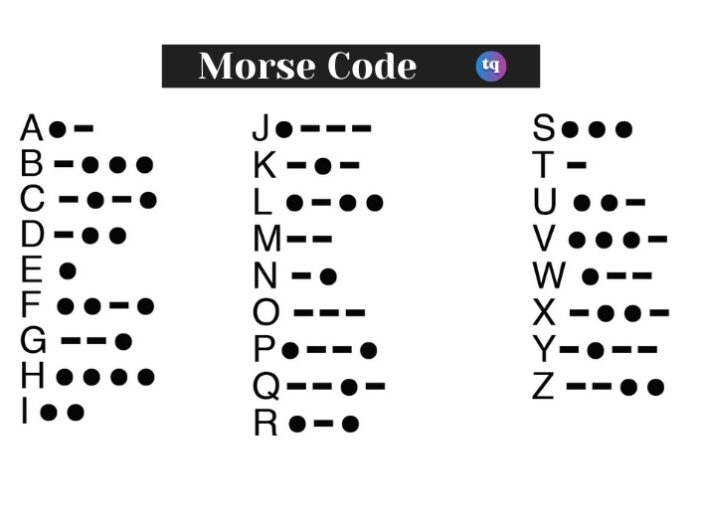
Morse code is a system of communication that uses a series of dots and dashes to represent letters, numbers, and symbols. It was invented by Samuel Morse in the early 19th century and was initially used to transmit messages over telegraph lines. Today, Morse code is still used by amateur radio enthusiasts and is also useful for sending urgent distress signals in emergency situations. Learning Morse code may seem daunting at first, but it’s not as difficult as you might think. With the right resources and some practice, you can learn Morse code on your mobile phone easily.
There are several mobile apps available that can help you learn Morse code, such as Gboard by Google. These apps provide a fun and interactive way to learn Morse code and can help you master the basics in no time.
Happy learning!
Table of Contents
Morse Code and How To Learn It On Mobile Phone Easily
Learning Morse Code on Mobile Phone
Learning Morse code on a mobile phone can be done through various apps designed specifically for this purpose. These apps often include features like interactive lessons, quizzes, and practice sessions to help you become proficient in Morse code.
There are several free and paid apps available for both Android and iOS devices. Choose the best Morse code translator app and download it. Once you’ve downloaded an app that suits your preferences, here are some steps you can take to learn Morse code effectively:
- Start with the basics: Begin by learning the Morse code alphabet, numbers, and common punctuation symbols. Familiarize yourself with the dots (.) and dashes (-) that make up Morse code characters.
- Practice Regularly: Dedicate regular time to practice Morse code. These apps usually offer different levels of difficulty and various exercises to help you grasp the code better.
- Interactive Learning: Many apps have interactive features like games, quizzes, and challenges that make learning Morse code engaging and fun.
- Use Audio and Visual Aids: Some apps provide audio playback of Morse code signals to help you associate the sounds with the characters. Visual aids like flashcards or diagrams can also aid in memorization.
- Increase Speed Gradually: As you become more comfortable with Morse code, gradually increase your speed. Practice decoding messages at faster rates to enhance your proficiency.
- Join Communities or Forums: Consider joining online forums or communities dedicated to Morse code enthusiasts. Engaging with others learning or being fluent in Morse code can provide support and additional learning resources.
Demystifying Morse Code
Morse code is a system where letters, figures, and other marks are represented by combinations of dots or dashes. For each character, there is a unique ordering. For example, ‘A’ is represented by a dot followed immediately afterwards by a dash ( ‘.-‘); B represents one before three dots (- …). These patterns are extremely important to learn for each character. They will be the basis of understanding in using Morse Code.
Dedicated applications and online resources have been created to aid people in learning Morse Code. Most of these tools also have interactive exercises, quizzes, and lectures that reinforce the learning. All these resources aid greatly in becoming familiar with Morse code sequences and practicing them.
Mobile Learning Resources
Today, there are many applications available for mobile phones, making it easier to learn Morse code. Application, such as the Morse Code Translator and Morse Code Reader applications. They transform your mobile device into a useful learning tool. The various practical functions of these types of apps, including flashcards, quizzes, and lessons, will all be made with the idea in mind that they form a real aid to learning Morse Code.
These mobile solutions are convenient and portable, which makes learning Morse Code possible anywhere at any time. Those platforms include decoding and encoding Morse Code characters and getting familiar with the sequences involved in them by performing activities.
Learning Strategies and Tips
Learning the Mobile Morse Code involves dedication and considerable forethought. Another strategy is to divide the process of learning into small steps. Our philosophy is not to learn a whole lot at once but rather start with just one or two characters.
For example, mnemonic devices and association techniques can be used to memorize patterns of Morse code. For example, makeup makes it easy to remember phrases or pictures that suit a particular character. This can help make learning more interesting and effective.
The first order of business in practice is to stress accuracy over speed. Don’t try to speed up the whole thing–just get each character correct. But be consistent and practice regularly to build on what you’ve learned.
Advanced Morse Code Techniques
After mastering Morse Code, there are many other high-level applications to experiment with. The first step is to become familiar with the International Morse Code–the standardized code that has been adopted worldwide–and what can be a bit baffling set of modifications, each possibly being used for some special purpose in a specific context or region.
You could also study specific areas where the Morse code is still important, like Ham operating procedures or flying. But in these fields, Morse code still performs an important function since it may be one’s only means to contact someone far away or communicate under circumstances where other forms of communication would otherwise be impossible.
Conclusion
Morse Code remains a timeless method of communication, blending history with modern applications. Learning it on a mobile phone is convenient and accessible, thanks to various apps and online resources. Dedication, practice, and utilizing diverse learning strategies are instrumental in mastering this encoding system. Whether for curiosity, practical use, or hobby, Morse Code offers a unique linguistic journey, connecting the past with contemporary technology. Embrace the dots and dashes, and discover the world of Morse Code at your fingertips.